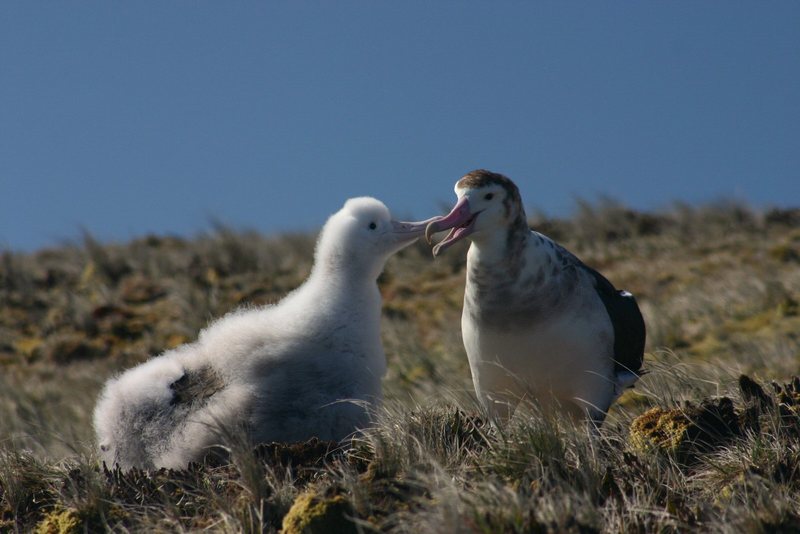|
| Query: Amsterdam albatross | Result: 1st of 7 | |
Amsterdam Albatross (Diomedea amsterdamensis) - Wiki
| Subject: | Amsterdam Albatross (Diomedea amsterdamensis) - Wiki
| |

| Resolution: 1600x1067
File Size: 273909 Bytes
Date: 2005:09:24 09:41:01
Camera: Canon EOS 300D DIGITAL (Canon)
F number: f/8.0
Exposure: 1/640 sec
Focal Length: 255/1
Upload Date: 2007:12:14 13:17:05
|
Amsterdam Albatross
From Wikipedia, the free encyclopedia
Order: Procellariiformes
Family: Diomedeidae
[Photo] Amsterdam Albatross (Diomedea amsterdamensis) feeding chick. albatros d'amsterdam et poussin. Date 24 September 2005. Author Vincent Legendre. Copyright (C) 2005 Vincent Legendre
Permission is granted to copy, distribute and/or modify this document under the terms of the GNU Free Documentation License, Version 1.2 or any later version published by the Free Software Foundation; with no Invariant Sections, no Front-Cover Texts, and no Back-Cover Texts. A copy of the license is included in the section entitled "GNU Free Documentation License". |
The Amsterdam Albatross (Diomedea amsterdamensis) is a huge albatross which breeds only on the Plateau des Tourbi??res on Amsterdam Island (French Southern Territories) in the southern Indian Ocean. It was only described in 1983, and was thought by some researchers to be a sub-species of the Wandering Albatross. The Amsterdam Albatross is a great albatross that breeds in brown, rather than the more usual white, plumage.
Amsterdam Albatrosses breed on open marshy ground. Both parents incubate the egg in stints that last for a week, with the chick hatching after 80 days. The chick is brooded for a month, and overall takes 230 days to fledge. It is fed by its parents every three days initially, with the feedings slowing down as it approaches fledging. At the peak of weight gain the chick will weigh more than its parents, but chicks then lose weight as the extra reserves are used to grow feathers. Having fledged the young bird will remain at sea for around 5 years before returning to the colony, and begin breeding a few years after returning. The breeding "language" of the Amsterdam Albatrosses is similar to that of the Wandering Albatross.
Because of its rarity the feeding ecology and at-sea distribution of the Amsterdam Albatross is not well understood. Off duty birds during the incubation stage of the breeding cycle cover large areas of the Indian Ocean, travelling up to 2400km.
The island on which this albatross breeds has undergone a significant decline in habitat condition due to the introduction of feral cats; as a result, the bird is listed on the IUCN Red List as Critically Endangered. It is likely that longline fisheries also contributed to the species' decline. The population upon discovery of the species was just 5 breeding pairs, with conservation this has increased to 13 breeding pairs, and the world current population is estimated at 80.
http://en.wikipedia.org/wiki/Amsterdam_Albatross
| The text in this page is based on the copyrighted Wikipedia article shown in above URL. It is used under the GNU Free Documentation License. You may redistribute it, verbatim or modified, providing that you comply with the terms of the GFDL. |
|
^o^
Animal Pictures Archive for smart phones
^o^
|
|

